An aviation oxygen supply system based on a mechanical ventilation model
Yn SHI,Yixun WANG,*,Molin CAI,Bolun ZHANG,Jin ZHU
aSchool of Automation Science and Electrical Engineering,Beihang University,Beijing 100191,China
bBeijing ChaoYang Hospital,Beijing 100043,China
1.Introduction
An AOSS has significant implications for pilot security by continuously providing oxygen according to the dynamic respiratory properties of pilots at high altitudes.1–7The airflow dynamic characteristics of an AOSS directly influence the safety,sustainability,and efficiency of the oxygen supply which aims to avoid low pressure and hypoxia in highaltitudeflight.Therefore,it is necessary to carry out research on the AOSS model.
Studies on AOSSs have been performed previously.New technologies such as high-altitude oxygen supply,pressurized cabins,pressurized oxygen intake,and airborne molecular sieve oxygen systems have been previously explored,and they have had pivotal effects on the characteristics of aircraft.1In an oxygen supply system,the oxygen supply structure as the main part of the system has been designed and studied.Xiao1introduced a general supply system which can providefixedpressure andflow-controlled oxygen by presetting the initial parameters.In his book,the structures of oxygen supply devices are introduced in detail,including the oxygen feed and the oxygen exhauster,using a flow regulator with a flat valve.2,3Furthermore,the structures of the main types of oxygen supply masks are displayed and analyzed.According to literature,4–7the oxygen concentration of an aviation system can satisfy the physiological needs of pilots by controlling the pressure andflow of supplied oxygen.
Alongside the mathematical model of a supplying system,Yu and Zhao8,9built models of the exhaust valve and pressure regulating devices by simplifying the airflow of the oxygen supply to throttling equations.Based on an active servo lung,Yi et al.10simplified a respiratory system to a first-order model with three basic elements(V,C,andR),which emphasized the conception of an air-resistor.While there still lacks comprehensive analysis for an entire oxygen-supplying respiratory system,11–13in the medical field,Shi et al.14–16modeled a pressure-controlled mechanical ventilation system by studying the breathing machine and patients’lungs.
In principle,mechanical ventilation used on ICU patients(which has been verified in detail in the papers mentioned above)is similar to that of a simplified oxygen supply system.8,9,14–16In addition,the simplified parts of the oxygen supply system can meet oxygen performance requirements via a control algorithm.17Next,the accessories used in the oxygen supply system are demonstrated to be improved in the mechanical characteristics throughfinite element calculation and parameter setting.18,19The basic purpose of a pressurecontrolled mechanical ventilation system is for pilots at high altitudes to obtain sufficient oxygen intake of relatively high pressure.This is similar in principle to an AOSS,and as a result,serves as an approximate model of the AOSS.20–26
In this paper,to lay the foundation for the safety and effi-ciency of an AOSS,the mathematical model of the system is proposed and demonstrated experimentally.Next,the airflow dynamic characteristic of the system,which includes the supplyingflow and pressure of oxygen in a simulative lung,is illustrated through simulation research.Furthermore,a parametric study clarifies the influences of key structural parameters on the dynamic characteristics and performance of the proposed AOSS model.
2.Configuration of aviation oxygen supply system model
An AOSS supplies oxygen continuously when an aircraftflies at an altitude of over 12000 m.According to the international standard,the pressure of the supplied oxygen is approximately 4 cmH2O.1As shown in Fig.1,the structure of the model of the AOSS can be simplified and considered as a mechanical ventilation system.In the system,the oxygen supply mask is directly connected to the respiratory tract of a pilot,which creates a sealed connection between the oxygen resource and the lungs.There are check valves to control the directions of inlet oxygen and outlet air between the oxygen resource and the lungs as well as between the lungs and the air outlet.
The working process of the oxygen supply is as follows:
(1)The oxygen supply resource starts to export oxygen uninterruptedly when the ambient pressure is below a certain value.Then,the chest muscles actively expand,which forms a vacuum in the lungs,and the airflow comes into the lungs.
(2)During the expiration process,the chest muscles actively contract which increases the pressure in the lungs,after which the air pressure in the lungs is high enough for the pilot to exhale.
According to the breathing properties of active lungs(which have been verified by Liu et al.3),the pressure provided by the respiratory muscles can be set in stages in the processes of both inspiration and expiration.Thus,the mathematical model of the aviation oxygen supply system is proposed as follows.
2.1.Flow equation
By using the ratio of downstream to upstream pressurePd/Pu,the air massflow equation through a restriction can be calculated.WhenPd/Puis below 0.528,the airflow is sonic.As the range of the pressure in the lungs is approximately between 2 cmH2O and 40 cmH2O according to our previous research,20the mathematical model of the respiratory system can be obtained as:

whereCfis flow coefficient,and it is equal to 1 when air is taken into chamber,and it is equal to-1 when air exhausts from the chamber.Qis the air volumeflow(m3/s),qis the air mass flow(kg/s),ρais the atmospheric density(kg/m3),Pdis the downstream pressure(cmH2O),Puis the upstream pressure(cmH2O),Ais the effective area of throttle(mm2),bis the critical pressure ratio which is equal to 0.528,Ris the gas constant which is equal to 287(J/(kg·K)),andTis the temperature(K).
2.2.Pressure equation
As the temperature of a human body is relatively constant,the prototype ventilation system can be assumed to be an isothermal system.Additionally,the differential expression of the Clapeyron equation can be written as:

wheremis the mass of air(kg),tmeans the time,pis the air pressure of the oxygen resource(Pa),Vis the volume of the lungs(m3),andCis the definition of respiratory compliance(m3/Pa).
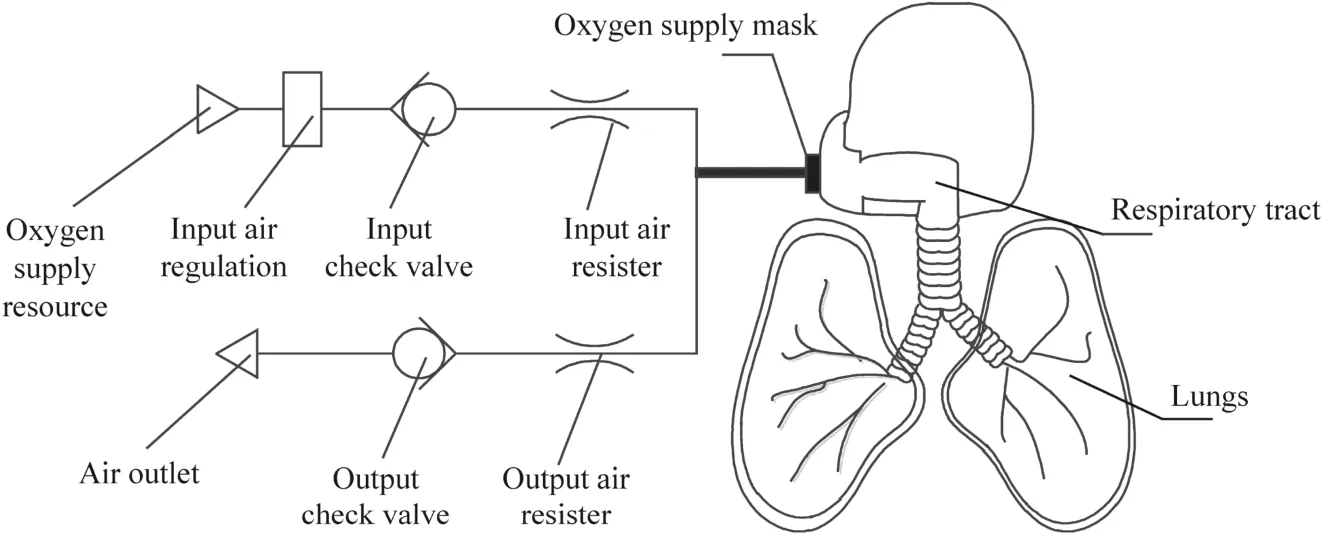
Fig.1 Model of aviation oxygen supply system.
2.3.Volume equation
According to the definition of respiratory compliance(C),the compliance of the lungs can be described as14–16:

Then the volume of the lungs can be represented in a discrete state equation as follows:

where ΔVis the volume of the lung change caused by a pressure change(m3),Vtis the change volume of the lungs(m3),Δpis the pressure change(Pa),Plis the pressure of the lungs(Pa),Reis the air resistance(cmH2O/(L·s)),andkis the cumulative number of sampling times which starts from integer one.
2.4.Synthesis equation
Therefore,based on the properties above,the equation about parameters such as the air resistanceRe,the compliance of the lungsC,the pressure of the lungsPl,and the change volume of the lungsVt,which describes the pneumatic model of mechanical ventilation,can be described as follows:

3.Experimental and simulation
To demonstrate the mathematical model proposed above,a simulative AOSS is built as shown in Fig.2.In the experimental station,the oxygen resource is simulated by a ventilator which is connected via air tubes.In order to simulate the breathing process of a real human body,a lung simulator is used which,with appropriate adjustments,has similar characteristics to those of real lungs.In the air pipeline,there are aflow sensor and a pressure sensor which are connected to a data acquisition card.The signal acquisition computer can gather and analyze signals from the sensors.Additionally,the lung simulator can transmit measurements of the volume change and pressure inside.
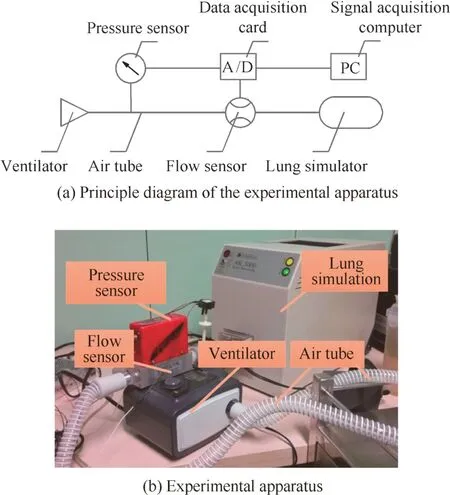
Fig.2 Experimental station of simulative aviation oxygen supply system.
For simulating real conditions of a pilot’s oxygen supply,the air ventilator pressure is set to 4 cmH2O when the lung simulator expands,and zero when the lung simulator contracts.By setting the breathing frequency to approximately 18 times per minute,the lung simulator expands and contracts to simulate a pilot’s natural breathing patterns.Then,experimental curves are obtained after several signal collections.Next,parameters for the mathematical model are set up according to the actual oxygen supply working condition,and then we obtain simulation results in a specific environment.Experimental and simulation results of theflow in the pipeline and the pressure in the lungs can be seen in Fig.3(a)and(b),respectively.
Theflow curves from the simulation and experiment are shown in Fig.3(a).Simulation and experimental results are mainly consistent,which demonstrates the mathematical model proposed above.Flow curves begin at negative values,which represents that the lungs expand and produce a negative pressure to draw in air during the process of inspiration.In this process,the oxygen supply equipment works continuously in which the pressure is set to 4 cmH2O to simulate a real AOSS at a high altitude.Simultaneously,the active servo lungs provide an expansion force effect.After approximately two seconds,the active servo lungs actively start to contract to simulate the expiration process,providing the compression force effect.This causes theflow direction of the oxygen supply system to sharply reverse when the oxygen supply equipment stops working.Additionally,the expiration time is relatively shorter than the inspiration time.This is a result of general breathing being simulated by setting up the pressure of respiratory muscles during the inspiration process.
Fig.3(b)shows the pressure curves from the simulation and experiment.As we can see from thisfigure,the trends of the experimental and simulation curves are basically consistent.The lung pressure curves are relatively low atfirst,which match well with theflow curves.After the inspiration process,the trends of the rising curves change for reasons that the oxygen supply simulation device stops working and the effects of the respiratory muscles are different during the processes of expiration and inspiration.
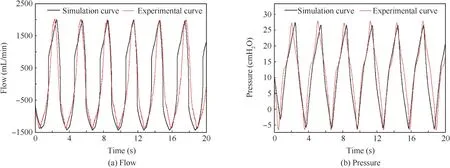
Fig.3 Flow and pressure curves of respiratory system.
4.Influences of system parameters on airflow dynamic characteristics of aviation oxygen supply system
In order to optimize the dynamic performance of the AOSS,the working dynamic characteristics of the system are studied.The output dynamic characteristics of the oxygen supply system are mainly under the influences of the equivalent throttling area of the inspiration pipeline(Ain),the equivalent throttling area of the expiration pipeline(Aex),the supply air pressure(Pin),and the external environment pressure(Pen).To illustrate the influences of the parameters on the airflow dynamic characteristics,the parameters are analyzed,and each one is changed for comparison while the other parameters are kept constant.
4.1.Influence of equivalent throttling area of inspiration pipeline
The equivalent throttling area of the inspiration pipeline(Ain)determines theflow of the air between the oxygen supply device and the lungs under a certain pressure differential.In this simulation,the supply air pressure(Pin)is set to 4 cmH2O and the external environment pressure(Pen)is set to atmospheric pressure.The equivalent throttling area of the inspiration pipeline(Ain)is set to the following values:8,12,and 16 mm2,and the airflow working dynamic characteristics are studied.The results are shown as follows.
Fig.4(a)shows theflow curves in the main pipeline of the AOSS.A comparison of the curves shows that the area of the inspiration pipeline(Ain)clearly influences the inputflow of the oxygen supply system.WhenAinincreases,the airwayflow increases,and the wave crests become sharper.Furthermore,the inspiration time will be shorter with the whole breathing cycle time invariant.Fig.4(b)shows that an increase ofAininfluences the pressure of the lungs by promoting the stability to a small extent.This is due to the supply oxygen pressure being much lower than the atmospheric pressure,and according to the principle of air-through-orificethrottling,a larger throttling area will increase theflow between the air resource and the lungs.
Fig.5(a)shows that the averageflow and pressure will stay relatively stable as the value of the wholeflow is approximated for each breathing cycle.As shown in Fig.5(b),increasingAinwill promote the stability of the pressure in the lungs but vastly increase airwayflow instability.For the overall stability of the system and avoiding the invalidation of the orifice throttling principle,for this particular system,Ainis modestly set to between 8 and 10 mm2.
4.2.Influence of equivalent throttling area of expiration pipeline
The equivalent throttling area of the expiration pipeline(Aex)indirectly influences the pressure of the active servo lungs.In this simulation,the supply air pressure(Pin)is constantly set to 4 cmH2O and the external environment pressure(Pen)is set to atmospheric pressure.The equivalent throttling area of the inspiration pipeline(Aex)is set to the following values:8,10,12,and 14 mm2,and the airflow working dynamic characteristics are studied.The results are shown as follows.
From Fig.6(a)and(b),the area of the expiration pipeline(Aex)evidently influences the outputflow of the oxygen supply system,which is similar to the effect ofAin.WhenAexincreases,theflow of the airway increases,and the wave crests will become sharper.An increase ofAexwill slightly promote lung pressure stability.
As Fig.7(a)shows,increasingAexwill reduce the average pressure of the lungs and promote the averageflow of the oxygen supply system,of which the variation degree is moderate.Furthermore,as Fig.7(b)shows,the pressure variance will not change noticeably with an increase ofAex.However,an overly large expiration area will suddenly intensify the instability of the breathing system due to the invalidation of the orifice throttling principle.Comprehensively considered,the area of the expiration pipeline(Aex)is set within 10–12 mm2.
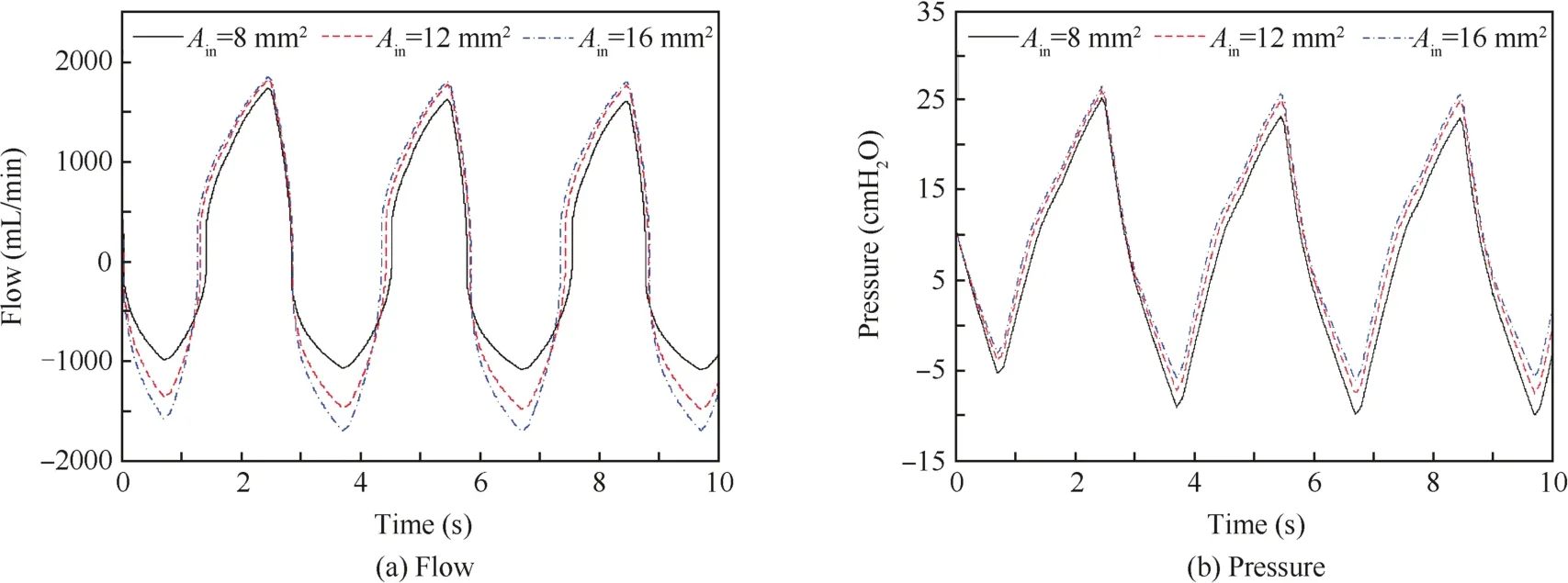
Fig.4 Airflow and lung pressure influenced by Ain.

Fig.5 Average and variance of pressure and flow influenced by Ain.

Fig.6 Airflow and lung pressure influenced by Aex.
4.3.Influence of supplied air pressure
The supply air pressure(Pin)directly affects the process of inspiration.In this simulation,the equivalent throttling areas of the inspiration and expiration pipelines are constantly set to 10 and 12 mm2,respectively.The external environment pressure(Pen)is set to 4 cmH2O lower than the atmospheric pressure to simulate a low-pressure environment.The supply air pressure(Pin)is set to the following values:0,4,24,and 44 cmH2O.The working dynamic characteristics of the airflow are then studied.The results are shown as follows.
According to the international standard,the pressure of the supplied oxygen is approximately 4 cmH2O.1Based on the standard,the influence of the input oxygen pressure(Pin)is studied for analyzing possible oxygen supply instability.As we can see from Fig.8(a),the input oxygen pressure(Pin)is also a key parameter for the whole AOSS.WhenPinis set to approximately 24 cmH2O,the dynamic tendency of theflow curve will not noticeably change.However,attenuation and instability will occur in the oxygen supply system whenPinis set to 44 cmH2O or greater.Therefore,although the standard pressure of supplied oxygen is much lower than what the human body has adapted to,the pressure of the input oxygen still has a substantial effect on the airflow dynamic characteristics.Similarly,from Fig.8(b),a moderatePinvalue will not cause a large disturbance of the dynamic characteristics of the oxygen supply system.
As is shown in Fig.9(a),the average value of the pressure tends to be stable while the average flow is greatly influenced byPinwhere the value is set lower than 24 cmH2O.From Fig.9(b),an overly highPinwill cause instability to both the pressure andflow.

Fig.7 Average and variance of pressure and flow influenced by Aex.

Fig.8 Airflow and lung pressure influenced by Pin.
4.4.Influence of external environment pressure
The external environment pressure(Pen)mainly has an impact on the expiration process.In this simulation,the equivalent throttling areas of the inspiration and expiration pipelines are constantly set up to 8 and 10 mm2,respectively.The pressure of the supply air(Pin)is set to 4 cmH2O.The external environment pressure(Pen)is set to the following values:4,24,44,and 84 cmH2O lower than the atmospheric pressure,simulating a low-pressure environment.These are expressed as 0,-24,-44 and-84 cmH2O.The results of the study are shown as follows.
The pressurized cabin of an aircraft counteracts the environmental pressure of its pilot at an overly high altitude.1Under the influences of the environment temperature difference,airtightness,altitude,and the rapid pressure change that occurs during cabin emergency pressure relief,the environmental pressure of a human body will seldom be constant.Therefore,the airflow dynamic characteristics of the oxygen supply system are studied by simulating a relatively low-pressure environment.

Fig.9 Average and variance of pressure and flow influenced by Pin.
AsshowninFig.10(a),thedynamicflowdoesnotnoticeably change when the external environment pressure(Pen)is at lower levels.Whiletheexternalenvironmentpressureislowerthan84 cmH2Obelowthestandardatmosphericpressure,theexpirationflow will apparently increase,and the flow ceiling is higher as well.As shown in Fig.10(b),the lung pressure will reduce with a reduction inPen.This is a result of a sufficiently low-pressure breathing environment causing oxygen depletion,which will create a low pressure,gas supply shortage for the pilot.
As shown in Fig.11(a)and(b),the average pressure decreases and becomes more unsteady whenPenis sufficiently low.The averageflow value through the pipeline of the oxygen supply system is relatively unstable and theflow variance is gradually increasing.From the analysis,it can be seen that the airflow dynamic characteristics will stay relatively stable with ahigherpressureinalow-pressureenvironment.Whentheenvironment pressure is lower than 84 cmH2O below the standard atmospheric pressure,pressure andflow stability will decrease.
Regarding to the optimization of the aviation oxygen supply system,we can consider that,structurally speaking,the equivalent throttling areas of the inspiration and expiration pipelines can be conclusively determined according to the optimal simulation results.From a parametric perspective,the settled input pressure can be properly controlled for the stability of the system.

Fig.10 Airflow and lung pressure influenced by Pen.

Fig.11 Average and variance of pressure and flow influenced by Pen.
5.Conclusions
To build a foundation for the optimization of an AOSS,the airflow dynamic characteristics of aviation are analyzed by building a mathematical model and setting up an experimental station.In addition,the influences of key system parameters are researched.Conclusions can be drawn as follows:
(1)The simulation results are consistent with the experimental ones,and the proposed mathematical model is demonstrated to be effective.
(2)Increasingtheequivalentthrottlingareaoftheinspiration pipeline may improve the airflow stability during the inspiration process.To avoid the invalidation of the ori-fice throttling principle,the equivalent throttling area of the inspiration pipeline can be set smaller within defined limits.
(3)As the area of the expiration pipeline increases,the air-flow during the expiration process will increase.However,an overly large expiration area will suddenly intensify the instability.
(4)An excessively high supplying pressure can disturb the stabilityofthesystemwhichmaycompromisethebreathing process.
(5)The AOSS can adapt to environments of low pressure with a lower limit of 84 cmH2O below the standard atmospheric pressure.
This research provides a basis for the design and performance optimization of an aviation oxygen supply system,especially in the area of oxygen supply at altitudes greater than 12000 m.
1.Xiao HJ.Applied physiology of aviation oxygen protective equipment.Beijing:Military Medicine Science Press;2005.p.248–51[Chinese].
2.Xiao HJ,Liu XP,Zang B,Wang GY,Gu Z.The denitrogenation by breathing oxygen-rich gas to prevent altitude decompression sickness.Chin J Appl Physiol2012;28(6):568–71[Chinese].
3.Liu XP,Xiao HJ,Zang B,Gu Z,Wang GY,Shi WR,et al.Test evaluation on oxygen supply scheme at high altitude for two pilots.Sci Technol Eng2014;2014(21):52–6[Chinese].
4.Hui DS,Hall SD,Chan MT,Chow BK,Ng SS,Gin T,et al.Exhaled air dispersion during oxygen delivery via a simple oxygen mask.Chest2007;132(2):540–6.
5.Crosbie WA,Warren JP,Smith LA.A new oxygen mask:comparison with other clinical methods of giving oxygen.J Int Med Res1974;2(3):214–9.
6.Cam BV,Tuan DT,Fonsmark L,Poulsen A,Tien NM,Tuan HM,et al.Randomized comparison of oxygen mask treatment vs.nasal continuous positive airway pressure in dengue shock syndrome with acute respiratory failure.J Trop Pediat2002;48(6):335–9.
7.Hudes ET,Marans HJ,Hirano GM,Scott AC,Ho K.Recovery room oxygenation:a comparison of nasal catheters and 40 per cent oxygen masks.Can J Anaesth1989;36(1):20–4.
8.Yu ZJ,Zhao JQ.Numerical simulation of pressure oxygen supply’s performance characteristic of oxygen supply system based on simulink.Microcomp Appl2010;31(2):1–6[Chinese].
9.Yu ZJ,Zhao JQ.Numerical simulation of oxygen supply system’s performance parameters characteristic at high altitude.J Beijing Univ Aeronaut Astronaut2010;36(8):918–21[Chinese].
10.Yi WW,Zhang Q,Wang YK,Qin HY.Mechanics modeling and simulation of artificial respiration system based on ventilator.J Syst Simul2009;21(15):4892–5[Chinese].
11.Jiang YX,Sun QL,Zhang X,Chen Z.Pressure regulation for oxygen mask based on active disturbance rejection control.IEEE Trans Indust Electron2017;64(8):6402–11.
12.Campkin NT,Ooi RG,Soni NC.The rebreathing characteristics of the Hudson oxygen mask.Anaesthesia1993;48(3):239–42.
13.Tehrani FT.A control system for mechanical ventilation of passive and active subjects.Comp Meth Prog Biomed2013;110(3):511–8.
14.Ren S,Shi Y,Cai ML,Xu WQ.Influence of secretion on airflow dynamics of mechanical ventilated respiratory system.IEEE/ACM TransComputBiolBioinf2017. https://doi.org/10.1109/TCBB.2017.2737621).
15.Ren S,Cai ML,Shi Y,Xu WQ,Zhang XD.Influence of bronchial diameter change on the airflow dynamics based on a pressurecontrolled ventilation system.Int J Numer Meth Biomed Eng2017.https://doi.org/10.1002/cnm.2929.
16.Shi Y,Zhang BL,Cai ML,Xu WQ.Coupling effect of double lungs on a vcv ventilator with automatic secretion clearance function.IEEE/ACM Trans Comput Biol Bioinf2017.https://doi.org/10.1109/TCBB.2017.2670079.
17.Adrian RJ.Particle-imaging techniques for experimentalfluid mechanics.Ann Rev Fluid Mech1991;23(1):261–304.
18.Jiang YX,Sun QL,Tan P,Chen ZQ.Modeling and simulation of an electronic oxygen regulator based on all-coefficient adaptive control.J Dynam Syst Measur Control2016;138(8):1–7.
19.Oomen PE,Skolimowski MD,Verpoorte E.Implementing oxygen control in chip-based cell and tissue culture systems.Lab on a Chip2016;16(18):3394–414.
20.Jodat RW,Horgan JD,Lange RL.Simulation of respiratory mechanics.Biophys J1966;6(6):773–85.
21.Jaimchariyatam N,DweikRA,Kaw R,AboussouanLS.Polysomnographic determinants of nocturnal hypercapnia in patients with sleep apnea.J Clin Sleep Med2013;9(3):209–15.
22.Yi WW.Research on the key technology of ventilation modes based on active servo lung[dissertation].Changsha:The National Defense Science and Technology University;2009[Chinese].
23.Yunus AC,Cimbala JM.Fluid mechanics fundamentals and applications.Columbus:McGraw Hill Publication;2006.p.185–201.
24.Niu JL,Shi Y,Cai ML,Cao ZX,Wang DD,Zhang ZZ,et al.Detectionofsputumbyinterpretingthetime-frequencydistribution of respiratory sound signal using image processing techniques.Bioinformatics2017. https://doi.org/10.1093/bioinformatics/btx652.
25.Niu JL,Shi Y,Cao ZX,Cai ML,Wei C,Zhu J.Study on airflow dynamic characteristic of mechanical ventilation of a lung simulator.Sci China Technol Sci2017;60(2):1–8.
26.Shi Y,Zhang B,Cai M,Zhang D.Numerical simulation of volume-controlled mechanical ventilated respiratory system with two different lungs.Int J Numer Methods Biomed2016;33(2852).doi:https://doi.org/10.1002/cnm.2852.
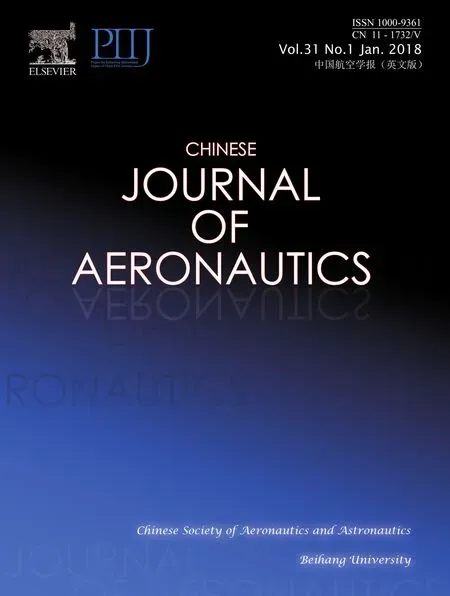 CHINESE JOURNAL OF AERONAUTICS2018年1期
CHINESE JOURNAL OF AERONAUTICS2018年1期
- CHINESE JOURNAL OF AERONAUTICS的其它文章
- Guide for Authors
- Influence of TiB2particles on machinability and machining parameter optimization of TiB2/Al MMCs
- An investigation on adaptively machining the leading and tailing edges of an SPF/DB titanium hollow blade using free-form deformation
- Analysis of the cylinder block tilting inertia moment and its effect on the performance of high-speed electro-hydrostatic actuator pumps of aircraft
- A direct position determination method with combined TDOA and FDOA based on particlefilter
- Rapid and robust initialization for monocular visual inertial navigation within multi-state Kalmanfilter
